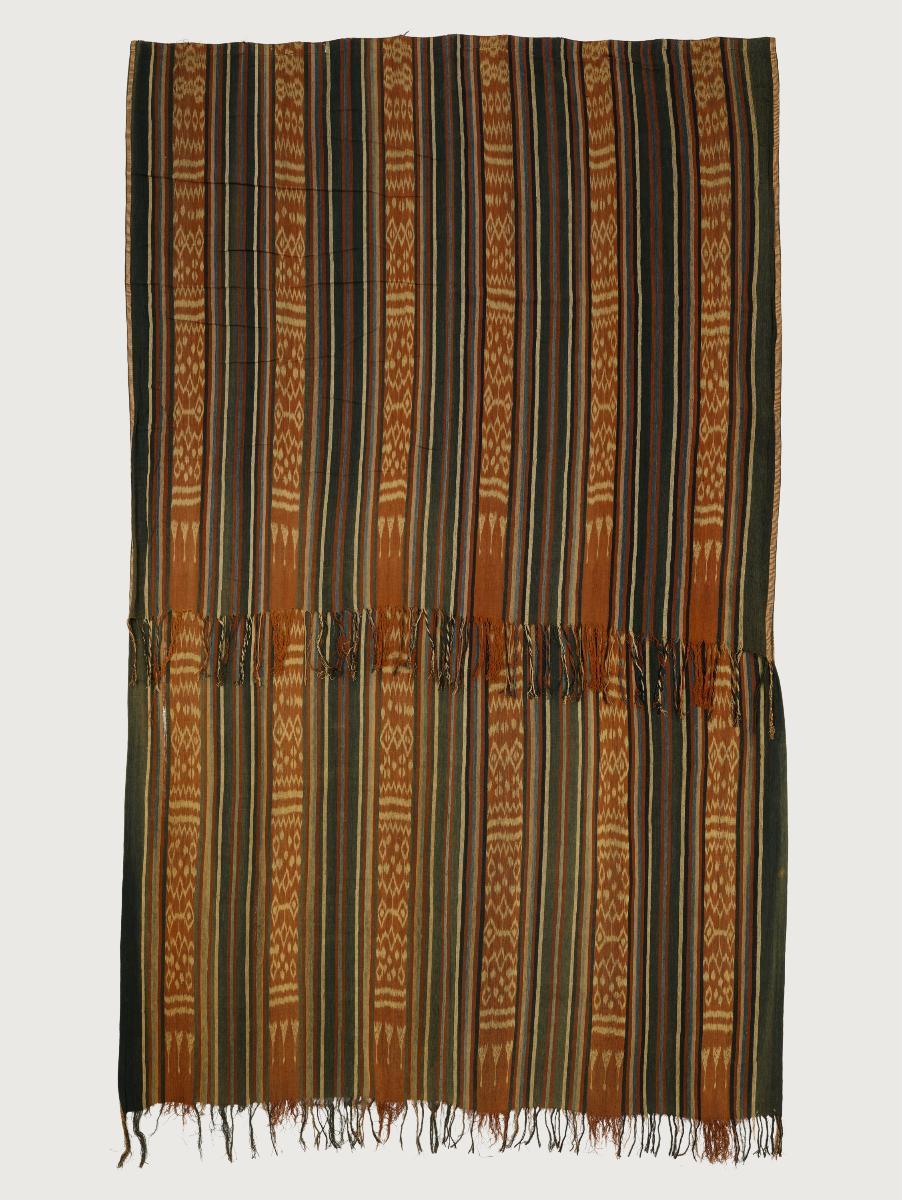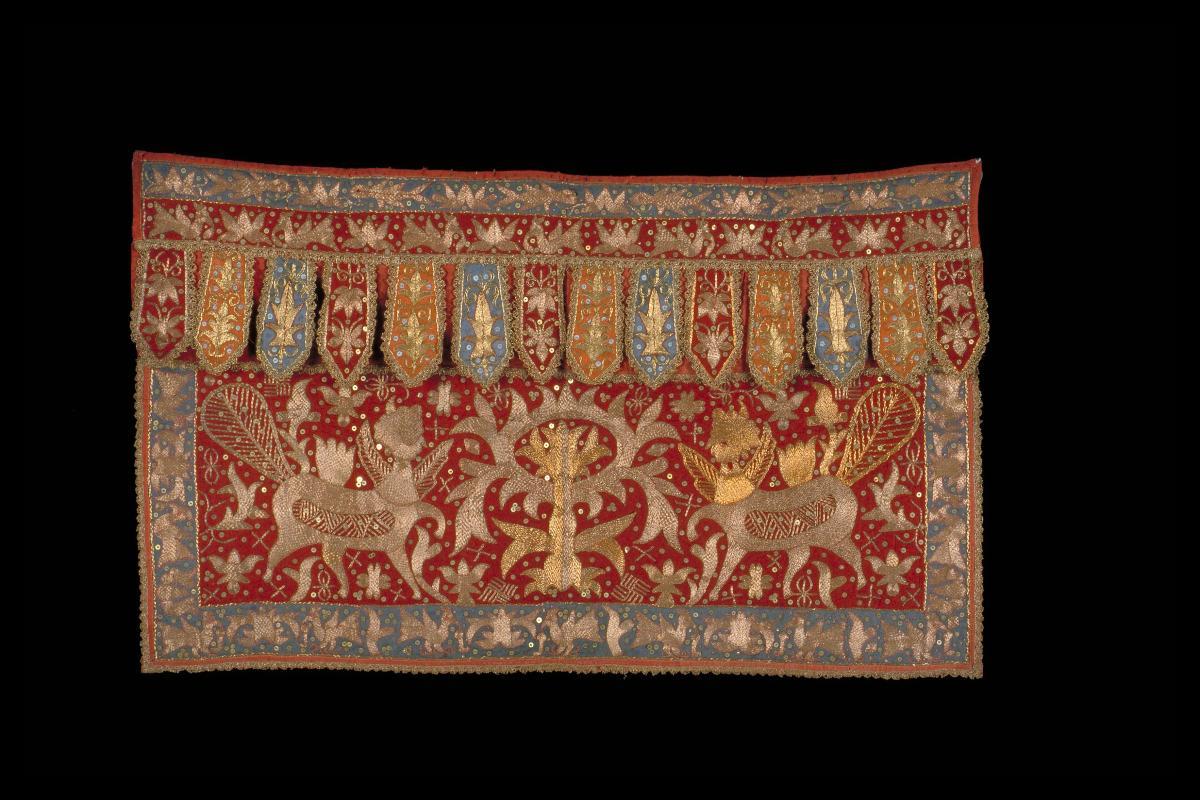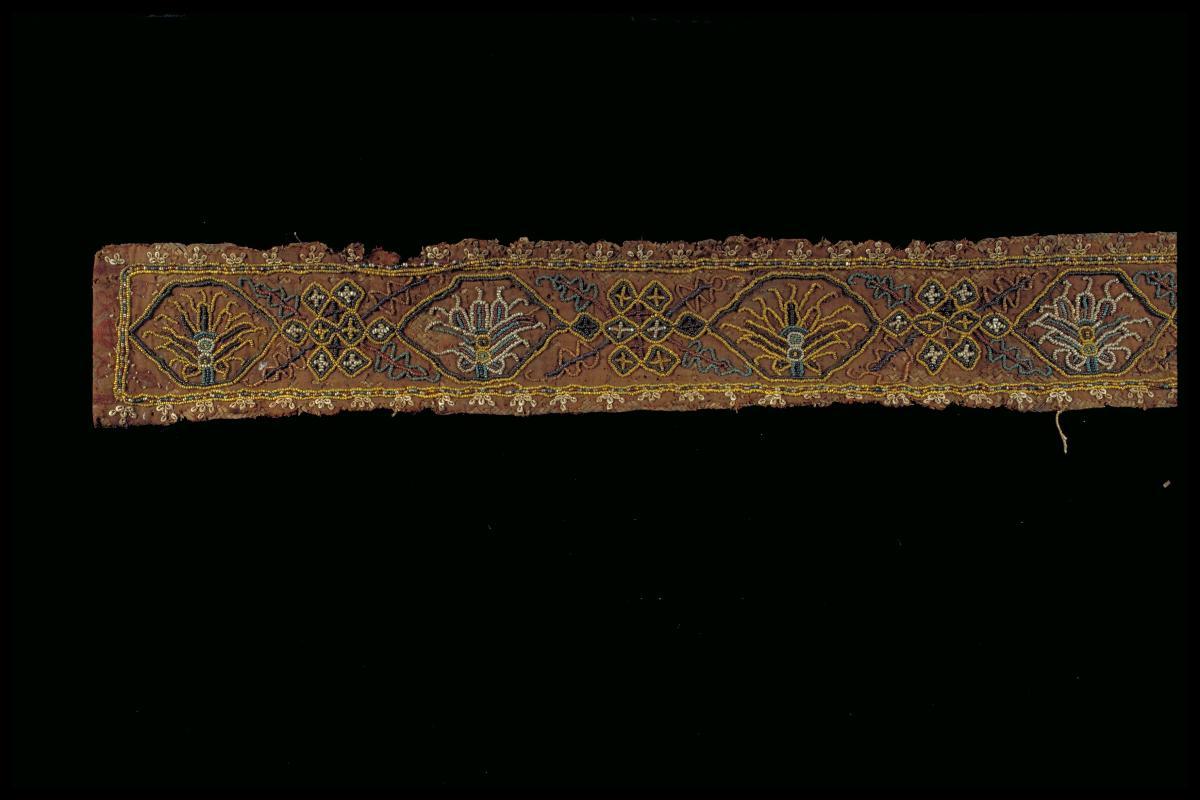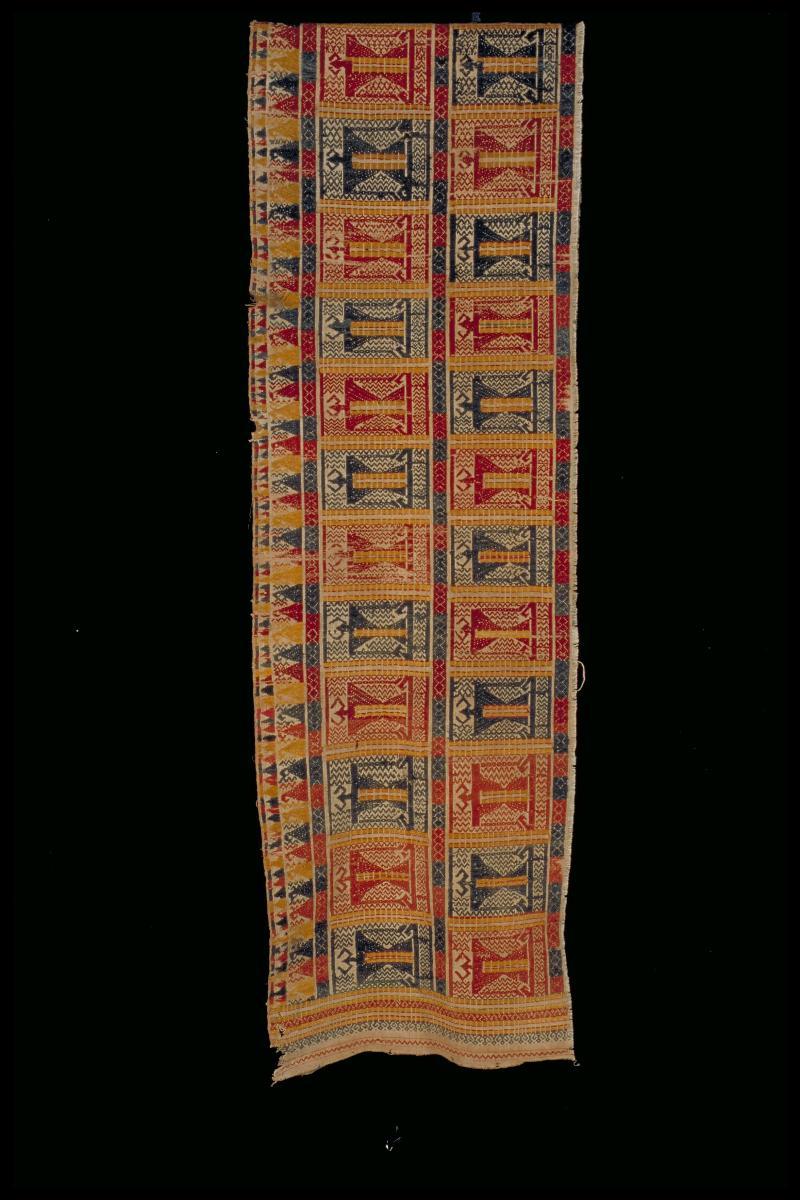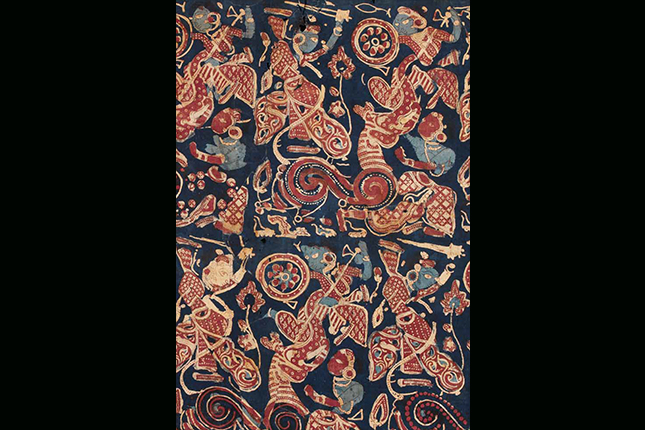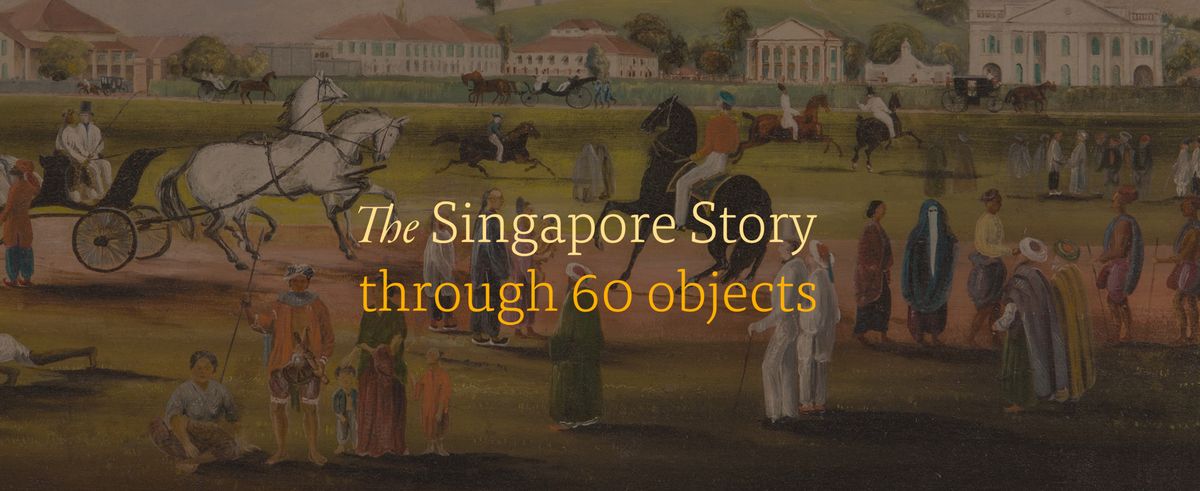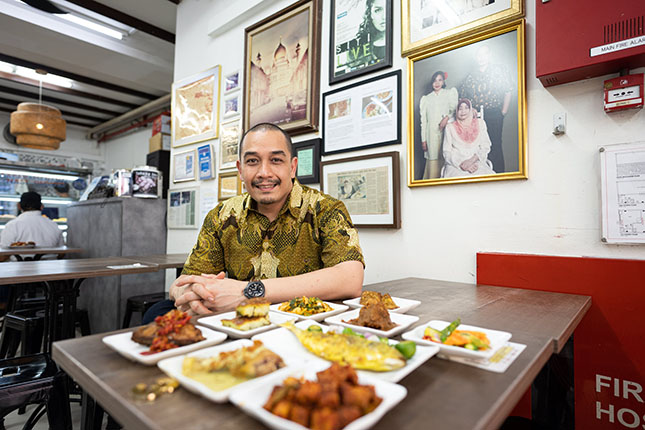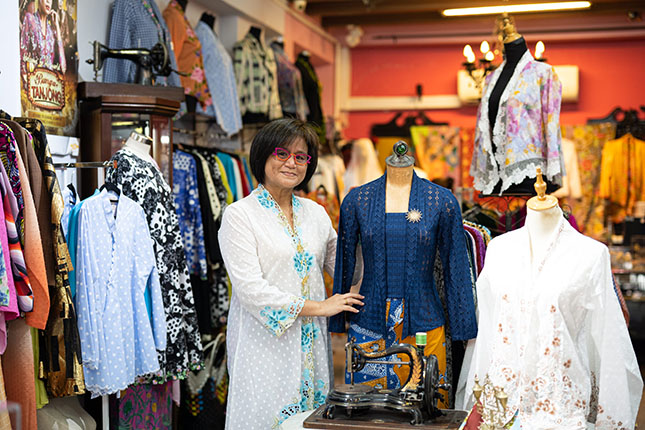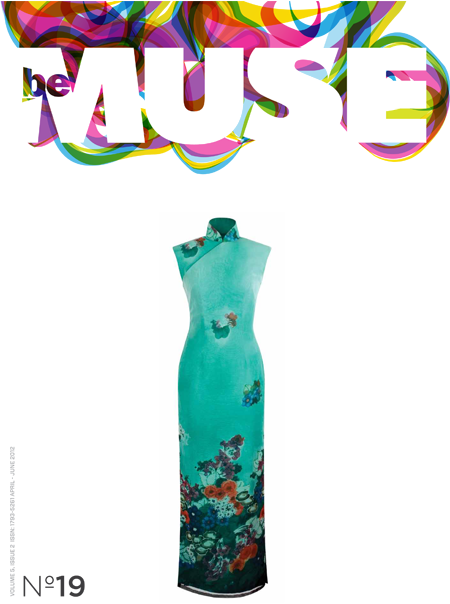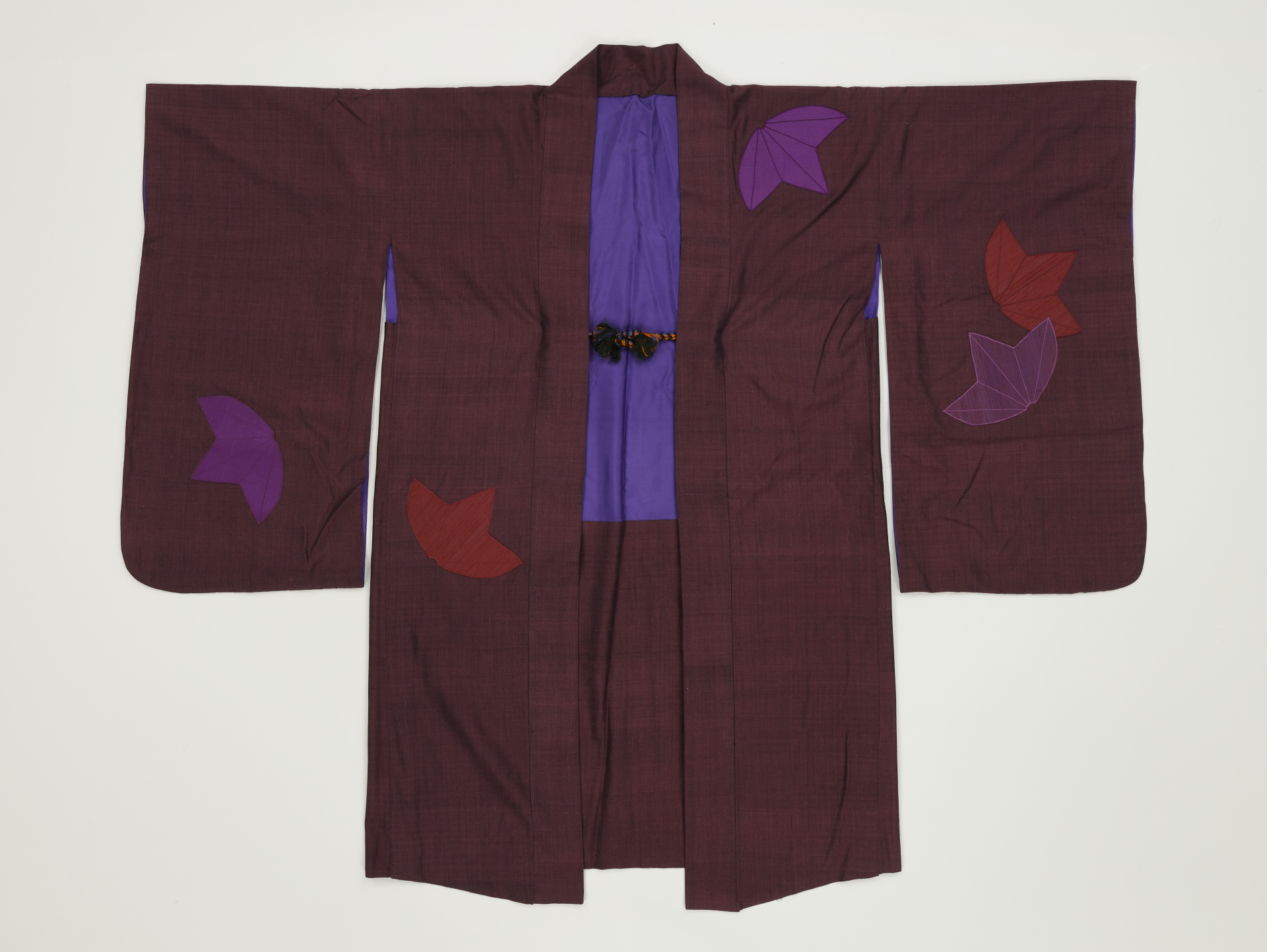Porilonjong is one of the longest textiles originating from Southeast Asia. Toraja women worked together in groups to tie patterns in bright red, blue and white warp ikat on hand-spun cotton to create these textiles. The patterns found on porilonjong include schematic and repetitive patterns such as rhombs, spirals and zigzags. This porilonjong is one part of a longer piece of cloth. Large metal rings were attached to the top of the textile so that it could be hung up. It is decorated with six horizontal bands of rhombs and zigzags, interspaced with bands of multi-coloured lines. The short sides of the textile include fringes of warp threads. These large textiles play a prominent role in burial rituals throughout the Toraja region. They are used as hangings held over the deceased, or as temporary walls to demarcate sacred compounds or graves. Women wear them as ceremonial skirt cloths in certain parts of central Sulawesi.




